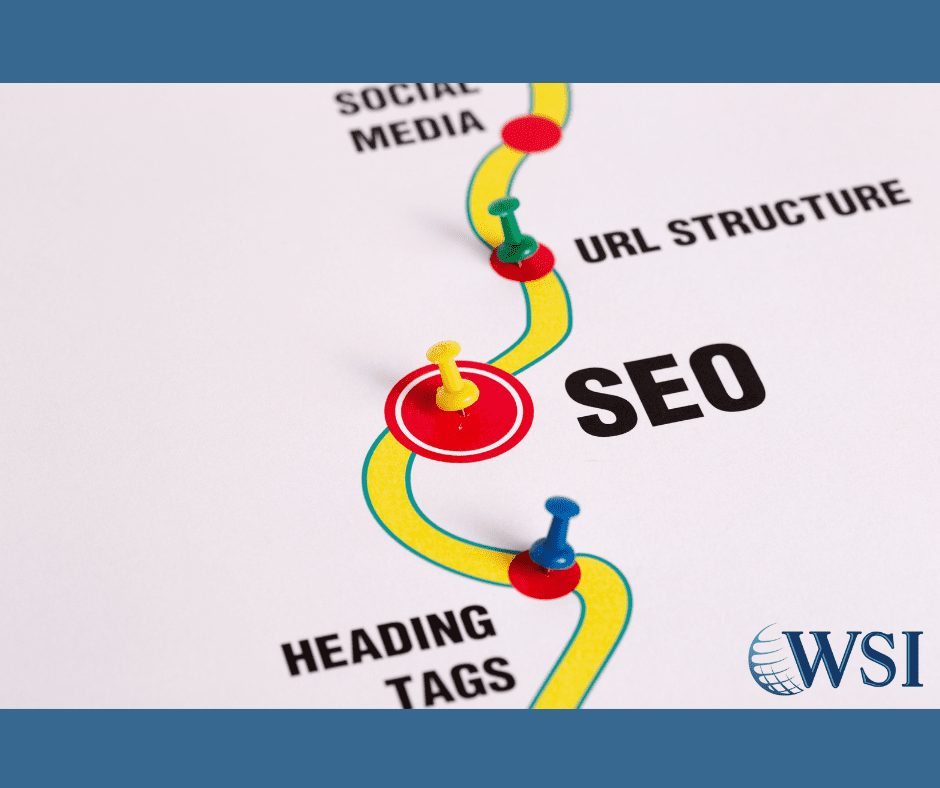In today’s digital age, local SEO is indispensable for businesses looking to attract customers nearby. This blog covers a comprehensive checklist for optimizing local SEO, detailing actionable steps to improve your local search performance and drive results. By following this guide, you’ll understand how local SEO works and the steps necessary for success.
What is Local SEO?
Local SEO helps your business appear in search results for people near your location. It involves optimizing online presence on search engines and directories, especially on Google Business Profile.
How Does Local SEO Work?
Google relies on three factors: relevance, proximity, and prominence. Understanding these helps fine-tune efforts and improve local search rank.
Local SEO Checklist Essentials
1. Optimize Your Google Business Profile
- Verify Your Business Profile: Complete verification to allow your profile to appear in Google’s local search and maps. This step also enables you to access insights and analytics directly through GBP.
- Complete Business Information: Fill in every section of your profile thoroughly, including business name, address, phone number, website URL, business hours, and any special hours for holidays or events. The more information you provide, the more Google can confidently show your business to relevant local searchers.
- Choose Relevant Categories and Services: Select both primary and secondary categories for your business. The primary category is the most important and should be the one that best represents your main service or product. Additionally, add specific services or products in the “Services” section to give potential customers a clear view of what you offer.
- Use High-Quality Visuals: Add high-resolution photos and videos of your business to make your listing more engaging. Consider uploading photos of the storefront, interior shots, team members, and popular products or services. Videos can further enhance engagement, showing everything from product demos to behind-the-scenes glimpses.
- Encourage and Respond to Reviews: Prompt your satisfied customers to leave positive reviews, as reviews directly impact how often your business is displayed in local search results. Always respond to reviews professionally, thanking customers for positive feedback and addressing any concerns mentioned in negative reviews.
- Enable Attributes and Q&A: Use attributes to highlight special features of your business, such as accessibility options or outdoor seating. Monitor the Q&A section and provide accurate, helpful answers to questions from potential customers. You can also post your own FAQs to preemptively address common inquiries.
- Create Regular Posts: Use the “Posts” feature on GBP to share updates, offers, and events. Regular posts not only engage your audience but also signal to Google that your business is active and responsive, which can positively impact visibility.
2. Monitor Performance Using Google Search Console
- Track Search Performance for Local Keywords: Use Google Search Console (GSC) to identify keywords that are bringing traffic to your website, especially for location-based queries. This will help you understand which search terms are most effective and where you may need to focus efforts.
- Monitor Click-Through Rates and Impressions: GSC provides insights on the number of impressions and click-through rates (CTR) for different search queries. High impressions with low CTR can indicate that your meta titles or descriptions need optimization to better capture searcher interest.
- Check Indexing and Mobile Usability: Make sure that your pages are indexed and accessible on mobile devices, as most local searches happen on mobile. GSC flags any indexing or usability issues, helping you ensure a seamless user experience.
3. Analyze Visitor Behavior with Google Analytics
- Track Local Traffic Sources and Behavior: Use Google Analytics to understand where your local visitors are coming from (e.g., organic search, direct visits, or referral sites) and how they behave on your site. This can help refine your content and on-page SEO for local relevance.
- Set Up Goals to Track Conversions: Define and set up specific goals in Analytics, such as form submissions, clicks on your phone number, or visits to your contact page. These conversions give insight into how well your site is driving local leads and what actions users are most likely to take.
- Identify High-Performing Content: Check which pages are most popular among your local audience. This can guide content creation by showing what topics resonate and where there’s room for improvement to meet local interests.
4. Ensure NAP Consistency
Maintain uniformity in your Name, Address, and Phone (NAP) across all online platforms. Consistency helps search engines verify your business location and improve local ranking. Regularly update all listings if any information changes.
5. Build Citations
List your business on reputable directories like Yelp, Bing, and Yellow Pages. Use tools to find potential citation opportunities, which can strengthen your online presence. Avoid duplicate listings to ensure clarity and avoid confusion.
6. Conduct Keyword Research for Local Search Terms
Focus on keywords with local relevance, such as city names or “near me” phrases. Tools like Google Keyword Planner or Ahrefs can help you find popular search terms in your area. WSI can also take care of this for you!
7. Create Location-Specific Content
Tailor content to target areas you serve. Write blog posts or create service pages highlighting local events, partnerships, or community involvement. This helps boost relevance for local searches.
8. Run Regular Local SEO Analysis
Use analytics tools to track and refine your strategy. Google Analytics and Google Search Console (see bullets 2 and 3) provide valuable insights on website performance, helping you see what’s working and where to improve.
9. Optimize On-Page SEO for Local Keywords
Incorporate location-specific keywords into titles, headers, and meta descriptions. Include your address and a Google Map on all contact and inquiry pages for added credibility.
10. Build Backlinks from Local Sources
Partner with Local Businesses: Collaborate with nearby businesses for backlinking opportunities. For example, if you’re a service provider, consider reciprocal links with complementary local businesses (like a home cleaning company linking to a local carpet cleaner).
Sponsor or Attend Local Events: Sponsor community events, fairs, or charity drives. Event pages and press coverage often include sponsor links, which enhance your site’s authority.
Engage with Local Blogs or News Sites: Reach out to local bloggers, news outlets, or community sites to feature your business, products, or services. These local mentions and backlinks can boost relevance in regional searches.
Join Local Business Directories and Chambers of Commerce: Listings on local directories or Chamber of Commerce websites provide credible backlinks, improve your online presence, and connect you with potential customers. These directories typically have strong domain authority, adding credibility to your website.
Leverage Press Releases for Local Announcements: If your business has a new product, expansion, or event, send a press release to local news sites or magazines. Many outlets link back to businesses in news stories, further bolstering your local SEO.
11. Manage Online Reviews Effectively
Encourage Positive Reviews: Ask satisfied customers to leave feedback on platforms like Google Business Profile, as positive reviews improve local SEO and increase trust with potential customers. Offer clear instructions on where to leave reviews to make the process easy for them.
Respond Promptly to All Reviews: Acknowledge all reviews, both positive and negative, as responding promptly shows that your business is engaged and values customer feedback. Express gratitude for positive comments, highlighting specific customer experiences when possible.
Handle Negative Reviews with Care: Address negative reviews professionally. Thank the customer for their input, apologize if necessary, and offer solutions to resolve the issue. This approach demonstrates your commitment to customer satisfaction and can help improve the perception of your business.
Use Feedback to Improve Your Business: Treat reviews as valuable feedback for improvement. Recurring comments, whether positive or negative, provide insights into what your business is doing well and what may need attention.
Showcase Positive Reviews on Your Website: Display glowing testimonials on your website to build credibility with potential customers. This also aids in establishing social proof, which can boost conversions by showing your business’s positive reputation.
12. Implement Structured Data Markup
Use schema markup to help search engines understand your location and services.
Use LocalBusiness Schema: Implement LocalBusiness schema to help search engines identify your business type, address, contact information, and service areas. This markup is essential for local SEO as it boosts your visibility in relevant local searches.
Add Business Hours and Contact Information: Include structured data for your hours of operation, phone number, and email, ensuring customers can see key information directly in search results.
Embed Location Data: Use Geo-coordinates schema to provide precise latitude and longitude for your business. This is especially helpful for businesses with physical storefronts, enhancing the accuracy of local search results.
Define Service Areas: Use structured data to specify service areas if your business operates in multiple locations or has specific regions it serves. This can help target nearby customers searching for services in your specified areas.
Enable Rich Snippets for Reviews and Ratings: Add schema for reviews and ratings to showcase positive customer feedback directly on search results pages. This improves click-through rates as customers see valuable social proof before visiting your site.
13. Optimize Your Website for Local SEO
Ensure your website structure supports local SEO: This includes dedicated location and service pages. Each location page should include specific details relevant to that area, while service pages should clearly outline all your company’s offerings. Link these pages in your site’s menu for easy navigation.
Prioritize mobile-friendliness: 60-70% of all local searches happen on mobile devices. Use clear, fast-loading design elements and optimize for a seamless user experience to improve rankings and keep visitors engaged.
Your Local SEO
Following this checklist will help your business capture local traffic, boost search engine rankings, and build customer loyalty. For help with improving your Local SEO, contact WSI today!

Jukka founded WSI Web Enhancers in 2012. His progressive and pioneering SEO approaches help businesses increase traffic while improving conversion rates. As an accomplished digital marketing authority, he spins effective web design, SEO, and social media engagement into winning strategies for local and national companies.






